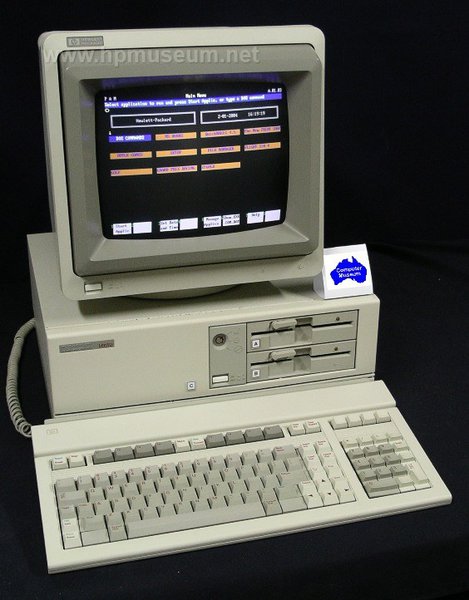guardian452 wrote:
But isn't this the way all modern browsers work?
In a word, no

I am green with envy. Fireflop on Irix
and
a fairly current one on Windows will lock up tighter than a miser's ass holding a nickel if you get two or three tabs taking a while to load.
connecting .... connecting .... connecting ...
No ! jerkface, you are
never
going to get fonts.googleapis.com. Ever ! So give it up, bitch !
I really hate that thing. Too bad Swarfari doesn't work on Irix.
safari spawns a couple processes per tab/window each with a dozen or so threads and for the most part the different tabs don't have any performance affect on each other.
Five points to Apple for being at least as smart as the average sixth-grader.
For example, I can have a few tabs open here, including a pdf, a bunch of misc. crap, and some HD flash video on a separate screen. These things have nothing to do with each other.
4 gb of memory ...
Code:
Select all
fool 2% Not enough space atcheckpoint/atrestart failed to malloc
libexc(10973): FATAL ERROR __exc_new_cache: unable to allocate a new cache
WARNING: core: firefox-bin: PID 10973, failed to write a text area (core file deleted)
moz_run_program[36]: 10973 Abort
The way I understand it from a layperson's perspective, is that with modern systems making separate processes and threads within processes is relatively inexpensive so it is better to just spin off as many as possible (within reason) and let the OS sort out the scheduling.
'Modern' as in 1993 ? Read OS/2 programming docs : it's nice to know that someone besides IBM finally figured it out but 'modern' ? Only in geological terms

japes wrote:
Recovering a closed session will load multiple pages at the same time.
You mean right after firefox crashes ? Yes

Also, if you are doing a search it's nice to rmb and open several tabs at once. The flop can handle maybe two or three tabs, after that you may as well go out to lunch while you wait. I'm talking on
Windows
here also, btw. And you can't even open another tab to do something else while you wait. It's locked up solid.
You probably don't see that problem because your innernet is fast but our overseas is piped in through a soda straw. S-l-o-w.
A single page/tab can be accelerated by having multiple processors available to Safari today.
That's nifty. I guess they finally got over cooperative multi-tasking ?
foetz wrote:
... how a browser process tree could be made better. but only at first sight because that still won't speed up single pages but only adds some failsafe and you can load pages in parallel each page taking one cpu ... whoever does load multiple pages at the same time

I do. Or try to, anyhow. It's a convenient search technique, especially if your connection is slow. Everybody has different needs, of course, and while speedup on a single page would be great, even a couple degrees of separation between other loading pages would be a big improvement.
I would like to know why some pages, e.g. duckduckgo search returns, are so slow to scroll ? I mean as in s -- l --- o -- w. It's just text, what's up with that ?
what i'd like to have is all cpus working on the
same
page because otherwise you have no speedup
Would be nice but I'll accept doing more things in parallel without locking up for the present. There's more quad-core cpus out there than Carter's Little Liver Pills but we're still stuck in Windows 3.1-land

People have all these methods for "parallelizing code" but if the underlying design of the program is junk, what good do all the tricks do ?
... bad poorly written JS that will hang up the interpreter regardless of how good it is. Well written and efficient JS that is used for useful work and requires lots of computational power is non-existent. Except for synthetic browser benchmarks.
No-Script. I guess I am extreme but so sick of crap Javascript that in general, it's turned off entirely. Once in a while I'll want something bad enough to turn it on temporarily but mostly, if it uses javascript, screw it. Go somewhere else.
I think it is better even if you have a single CPU because one bad process is not going to wreck the whole program.
Yeah, well, Fireflop needs a serious makeover. It worked a lot better when it was Netscape 3.0





 I am green with envy. Fireflop on Irix
I am green with envy. Fireflop on Irix
 One real hassle with fireflop is that it becomes unresponsive so easily. That problem was solved decades ago by IBM and BeOS both. How difficult would it be to jack up the front end and install a roll bar ? The trick with BeOS and OS/2 both is that the main thread immediately opens worker threads to run the application, while the main thread becomes a listener thread. Why can't we modify Fireflop code in the same manner ? Take the main, spawn off a thread to become what would normally be the current fireflop, and let the initial main thread stick to listening for user input ?
One real hassle with fireflop is that it becomes unresponsive so easily. That problem was solved decades ago by IBM and BeOS both. How difficult would it be to jack up the front end and install a roll bar ? The trick with BeOS and OS/2 both is that the main thread immediately opens worker threads to run the application, while the main thread becomes a listener thread. Why can't we modify Fireflop code in the same manner ? Take the main, spawn off a thread to become what would normally be the current fireflop, and let the initial main thread stick to listening for user input ?





